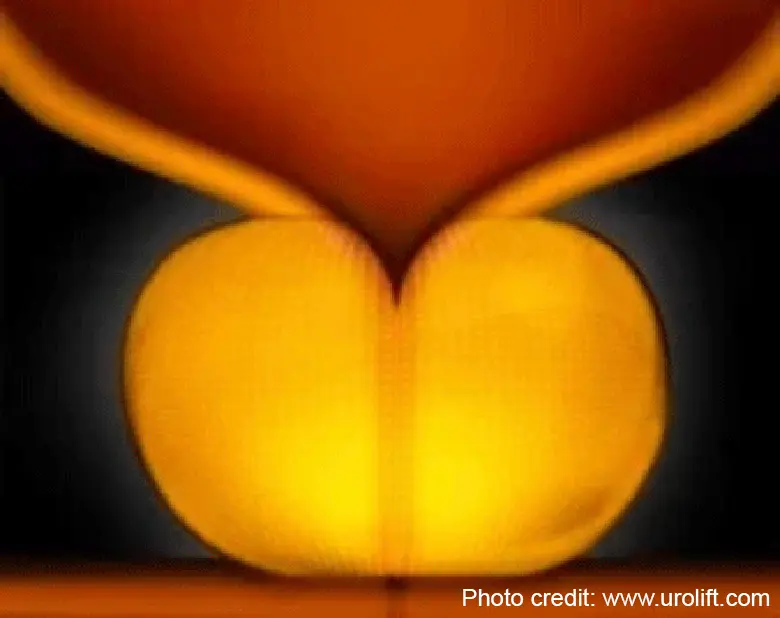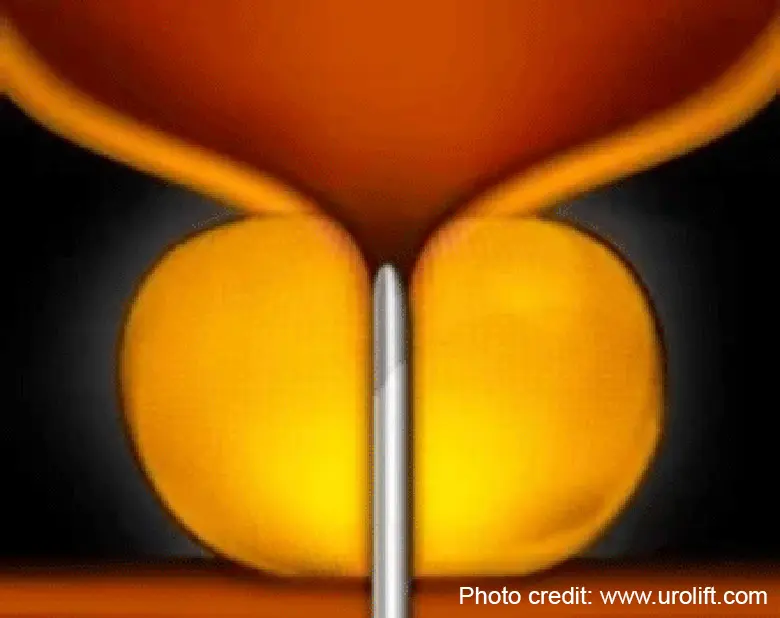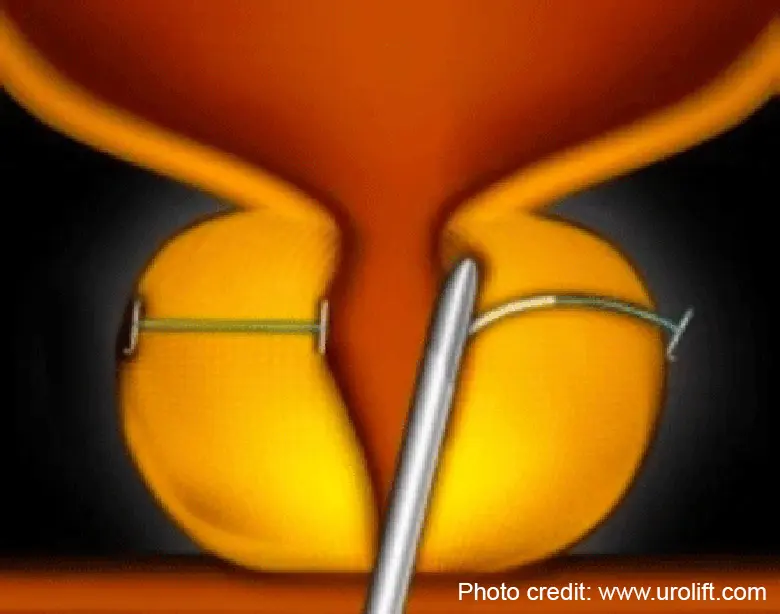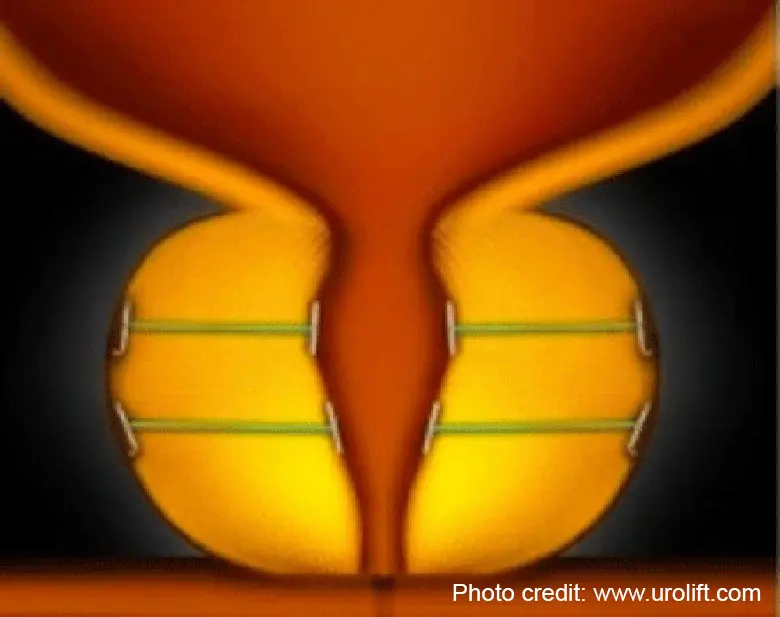Prostatic Urethral Lift (PUL)
What is prostatic urethral lift (PUL)?
Prostatic urethral lift (PUL) is a treatment for non-cancerous enlargement of the prostrate gland, also known as benign prostatic hyperplasia (BPH).
PUL is a minimally invasive day surgical procedure. It involves the use of small permanent implants to draw apart enlarged prostate tissue compressing and narrowing the urethra within the prostate gland. By lifting and holding the enlarged prostate tissue out of the way, it reduces pressure on the urethra, thus relieving urinary symptoms. This procedure does not involve cutting or removing prostate tissue.
The implants are intended to be permanent and there is no need to remove the implants. They are made from standard surgical implantable materials that include:
- A nitinol capsular tab
- A stainless steel urethral tab
- Polyethylene suture (stitches) that holds the 2 tabs together
PUL has a relatively high success rate. After the first month, 80% of men reported being ‘much’ or ‘very much better’.
How it works
Enlarged prostate: An enlarged prostate can narrow or block the urethra. This causes urinary symptoms and discomfort.
Step 1: During the prostatic urethral lift (PUL) procedure, a delivery device is inserted through the obstructed urethra to reach the enlarged prostate.
Step 2: Tiny implants are permanently placed to lift and hold the enlarged prostate tissue apart. This relieves pressure on the urethra and widens the opening.
Step 3: After the implants are put in place, they remain permanently in place to provide symptom relief by opening the obstructed urethra.
Source: UroLift
Other treatment options for BPH
Medication is usually the first line of treatment for BPH if you have mild to moderate symptoms. If your symptoms are moderate to severe, minimally invasive or surgical treatment may be recommended.
The types of treatment include:
- Drug treatment, which includes 2 broad categories of medication:
- Drugs that relax the prostate to reduce the blockage of the bladder opening
- Drugs that block the production of the male hormone (DHT) which is involved in prostate enlargement
- Minimally invasive treatment such as water vapour therapy and prostatic urethral lift (PUL)
- Surgery to remove the parts of the swollen prostate that are pressing against the urethra. The methods used include:
- Laser prostatectomy (laser vaporisation)
- Transurethral resection of the prostate (TURP)
- Transurethral incision of the prostate
- Open surgery is used when the prostate is too large
- Simply waiting and observing if symptoms are less severe
Why do you need a prostatic urethral lift (PUL) procedure?
As a man ages, his prostate, the gland that makes the fluid in semen, also grows in size in response to male hormones such as testosterone. This is usually not a cause for concern unless the prostate, typically the size of a walnut, enlarges to almost the size of a lemon and causes problems like urinary obstruction.
Benign prostatic hyperplasia (BPH) occurs when the prostrate grows in size and causes urinary tract issues such as:
- A sense of incomplete bladder emptying
- Difficulty in starting urination
- Frequent interruption of the urine stream
- Frequent urination (including at night or after bedtime)
- Urgency to pass urine
- Urine leakage
As a treatment for BPH, prostatic urethral lift (PUL):
- Allows you to avoid long-term medication and its side effects
- Does not result in the side effects, such as erectile dysfunction and ejaculatory problems, that may be caused by surgical procedures that reduce the size of the prostate
- Does not require inserting a catheter into the urethra to drain urine after the procedure.
What are the risks and complications of a prostatic urethral lift (PUL) procedure?
You may experience mild to moderate side effects after a PUL procedure. The most common side effects are:
- Blood in the urine
- Pain or burning sensation when you urinate
- Pelvic pain
- Urgent need to urinate or inability to control the urge.
Most of these side effects resolve within 2 – 4 weeks after the procedure.









